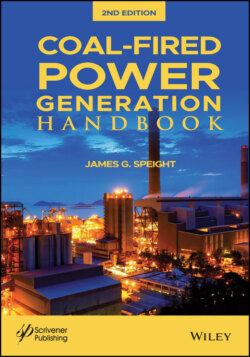Читать книгу Coal-Fired Power Generation Handbook - James Speight G., James G. Speight - Страница 10
Оглавление
Preface
This book describes the steps and challenges by which electricity is produced from coal and deals with the challenges for removing the environmental objections to the use of coal in future power plants. New technologies are described that could virtually eliminate the sulfur, nitrogen, and mercury pollutants that are released when coal is burned for electricity generation. In addition, technologies for the capture of greenhouse gases emitted from coal-fired power plants are described and the means of preventing such emissions from contributing to global warming concerns.
Also, the book introduces the use of the various types of biomass and waste that can be used for generating electricity at a commercial-scale facility rather than a utility-scale project. Biomass heat and biogas, including anaerobic digestion and landfill gas, are covered in other technology resource pages in this guide.
The book, which is written in an easy-to-read style and is also illustrated by diagrams and tables, describes the performance of power plants and the costs of power generation as influenced by many coal properties. Specifically, coal quality impacts not only coal cost but also net power output as well as capital and operating and maintenance costs and waste disposal costs. In fact, coal quality impacts the coal chain in a power plant and their relationship to power generation costs.
Part I of this book describes the steps and challenges by which electricity is produced from coal and deals with the challenges for removing the environmental objections to the use of coal in future power plants. New technologies are described that could virtually eliminate the sulfur, nitrogen, and mercury pollutants that are released when coal is burned for electricity generation.
Part II presents the various aspects of power generation including chapters on gas cleaning, clean coal technologies, and environmental issues arising from the use of coal.
Part III introduces the reader to the use of other fuels for the generation of electricity, including viscous feedstocks, biomass, and solid waste. A chapter relating to energy security and the future of power generation is also included.
There is also a comprehensive Glossary that will help the reader to understand the various terminologies that are used in this important energy field.
Dr. James G. Speight Laramie, Wyoming August 2020
